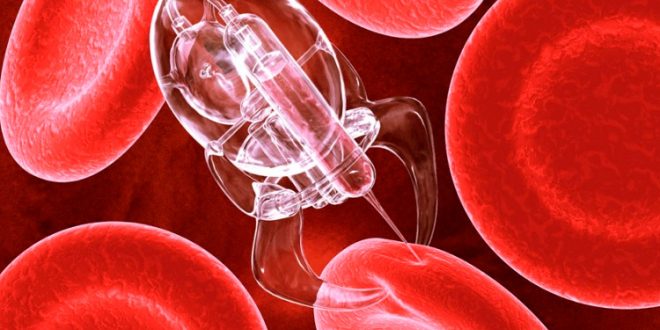Nanobots are the medical treatment of the future. They can do practically anything from obliterating fevers to curing cancer. Nanobots are truly amazing.
Nanobots or Nano-robots are little tiny robots. They are so small in fact that they can fit into your bloodstream. These robots are about 1-10 nanometers or 1-9m. Meanwhile Red Blood Cells or RBC are about 7.5 micrometers (micrometers are1-6of a meter). The first nanobots were put to test at Penn State university. The nanobots were tiny synthetic motors, propelled by ultrasonic waves and controlled with magnetic waves, spinning and bashing away at the cell membrane of a cell.
Now here are some more advanced groundbreaking tech: the non-infectious version of killing cancer. How we cure cancer today is to put the cancer patient under a big complicated machine and, in essence, bathe them in radiation and poison them, all to get rid of a tumor. Now with nanobots you don’t need to sit in the hospital for months because you are immensely sick, of the “treatment”. It works but it’s definitely not clean. The nanobots come in two waves of particles. Each just a molecule in size. In the first wave, trillions of gold particles rain forth to try to detect the tumor. Then, the doctor will shine a harmless laser through the patient, when the laser strike the gold particles they will heat up causing the tumor to become “sunburned”. After that, the second, more focused wave comes, attracted to the “sunburned” signal. The nanobots latch onto the tumor and use varied cancer treatments to kill the tumor without the disturbingly large amounts of side effects (hair loss, sickness,more cancer, death, etc) today’s treatments have.
Nanobots are the amazing, cancer-killing, elite SWAT team of the medical world. To get our scientists working to produce more amazing nanobots go donate to your local medical foundation and make a difference.
 Tempus Magazine By Students, For Students
Tempus Magazine By Students, For Students 



